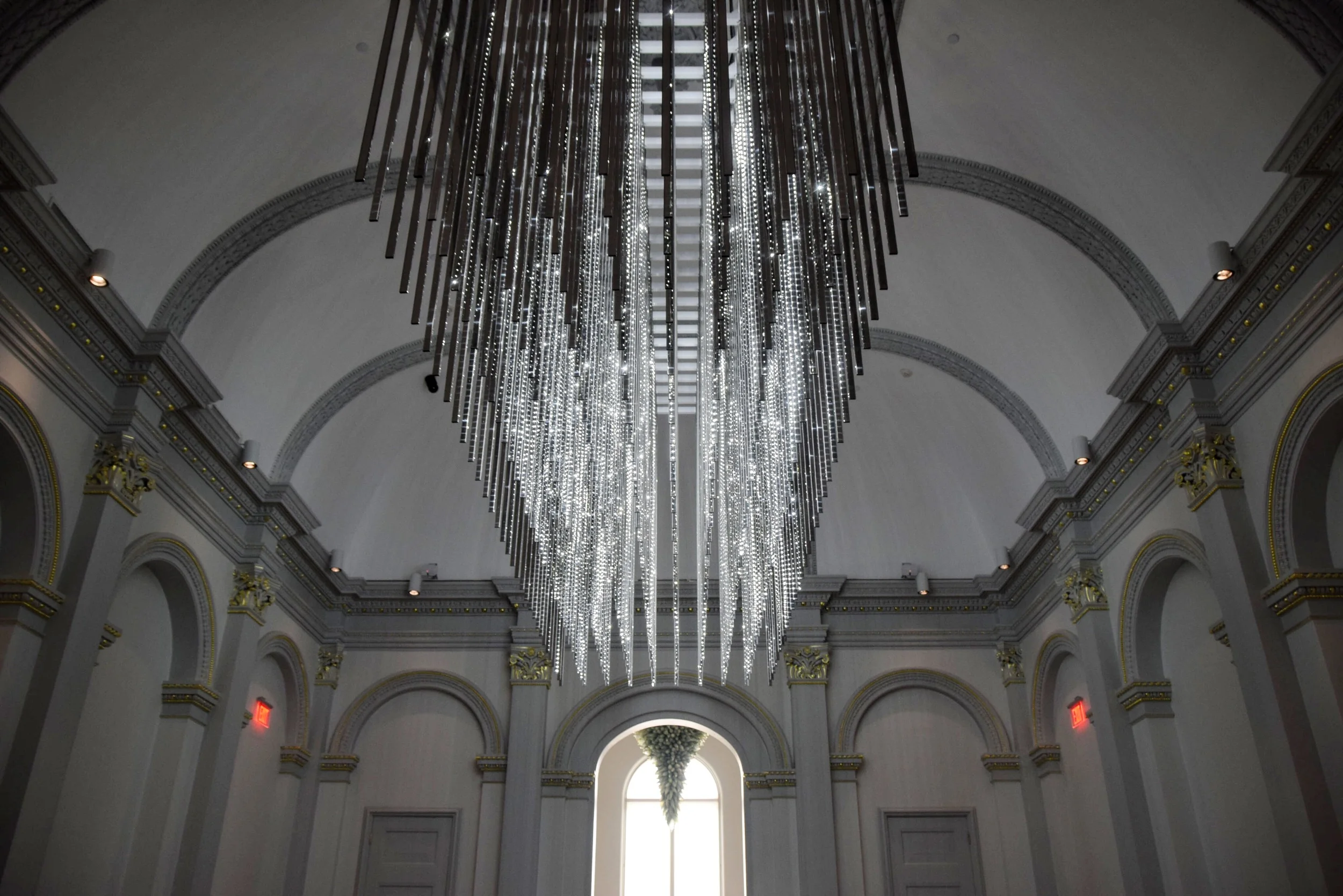It seems like DC has a thousand museums. While I was in town, poking around to see what was interesting, seemingly everyone asked me, "Have you been to the Renwick?" The museum recently re-opened after a two year restoration and kicking off its re-debut is "Wonder". Nine contemporary artists created large-scale installations from unexpected materials (index cards, marbles, strips of wood, etc.)
I (and hundreds of others) swung by on a freezing Tuesday afternoon. It was crowded, which means the hype is city-wide, but also well worth braving the cold. I gasped at Gabriel Dawes's rainbows, recoiled at Jennifer Angus's insect room and nearly dozed off under Janet Echelman's ceiling-affixed twine.
Check out my top 6 exhibits below.
And if you're in town swing by. MORE INFO: HERE
Gabriel Dawe weaved together thousands of strands of cotton thread to recreate memories of the skies in Mexico City and East Texas, his childhood home and current home, respectively. The array of colors were influenced by the embroidery he saw on objects in Mexico.
The exhibition looks like a large crystal chandelier hanging above the museum's Grand Staircase, but, in fact, artist Leo Villareal programmed 23,000 LEDs to create "the visual manifestation of code" that never repeats. The goal is to challenge the way we think of coding, from a line of characters on a screen to a visual object.
Inspired by the exploration and scientific discovery of the Victorian era, Jennifer Angus uses insects provided by farms or collected by local indigenous peoples who live in or near rainforests. In a statement on her personal site, she assures that none of the insects are endangered and that her work is ecologically sound.
In this exhibition, she’s arranged the insects to reference textiles and wallpaper, juxtaposing the apprehension most people have about bugs, and to explore ideas about home and comfort.
Tara Donovan explores how individual parts dissolve into the hole using thousands of individually stacked index cards to create 10 looming spires inspired by the hoodoo rock formations in Utah and the volcanic fairy chimneys of Turkey’s Cappadocia region.
John Grade's “Middle Fork” is an 85-foot long tree sculpture constructed from thousands of tiny blocks of cedar. It's formed from a plaster cast of a living hemlock in the Cascade Mountains, near Seattle.
Janet Echelman used 51 miles of twine to create “1.8 (One Point Eight)”, a net sculpture that hangs in the gallery’s Grand Salon. The twines are knotted together, and lit with choreographed lighting to alter the perspective. (There were about 50 people, self included, lying on the floor, composed of regenerated nylon fibers repurposed from discarded fishing nets beneath it.)
Oh, in case you were wondering, the title of the exhibit refers to the length of time that the earth’s day was shortened as a result of the 2011 Tohoku earthquake and tsunami in Japan.

















